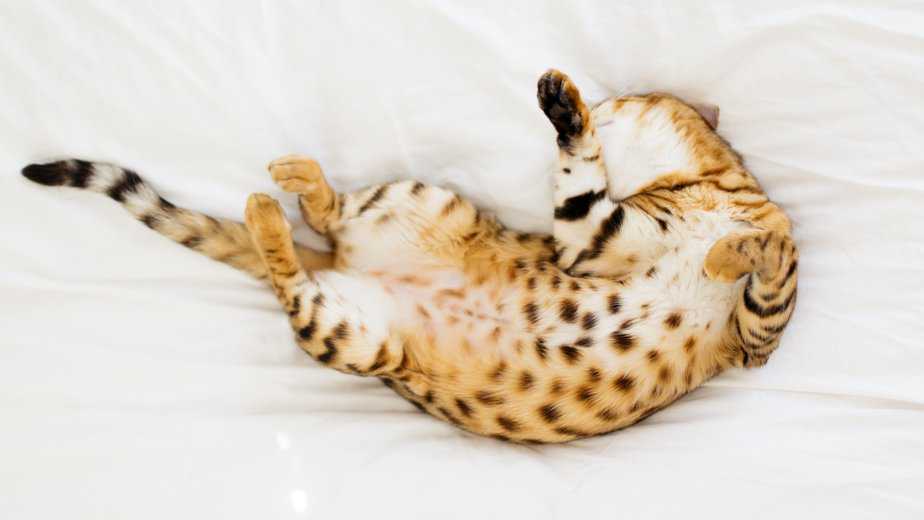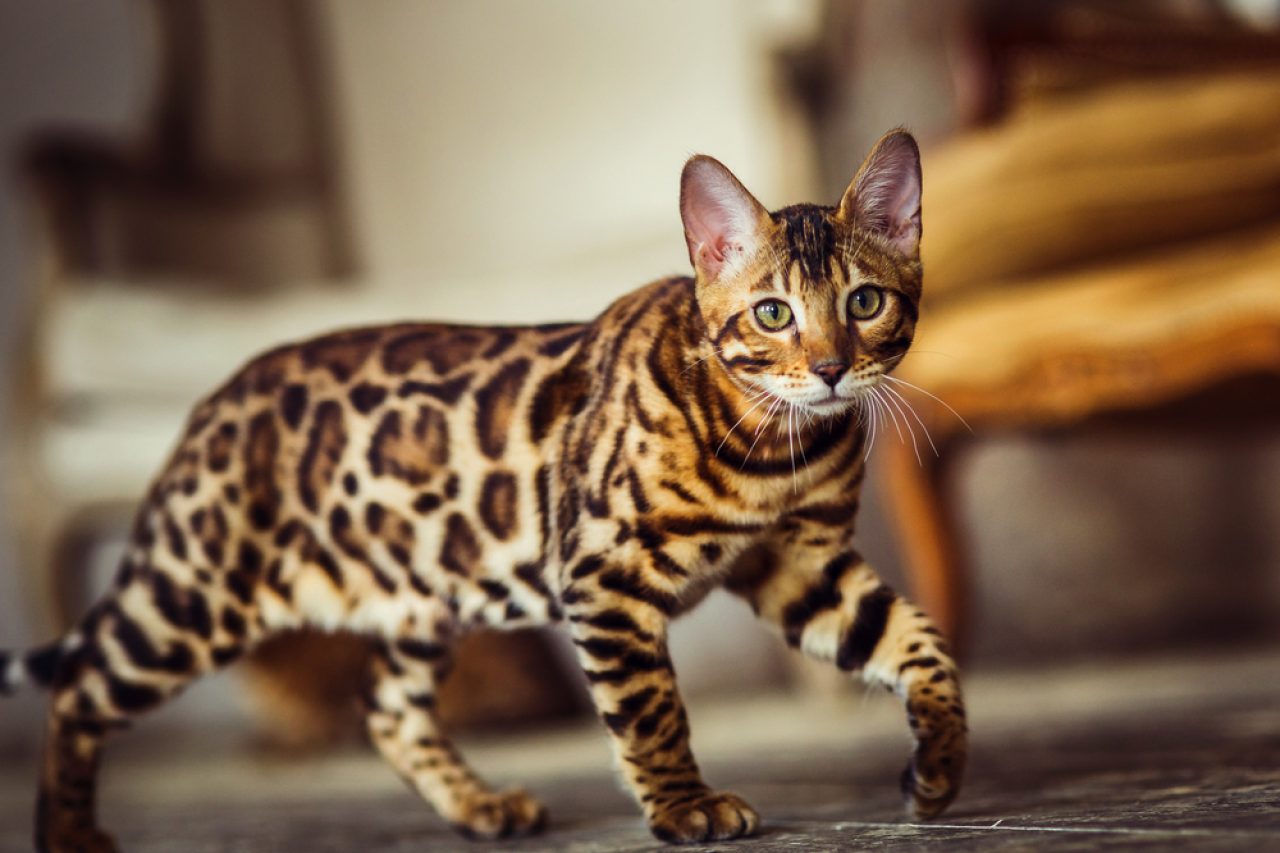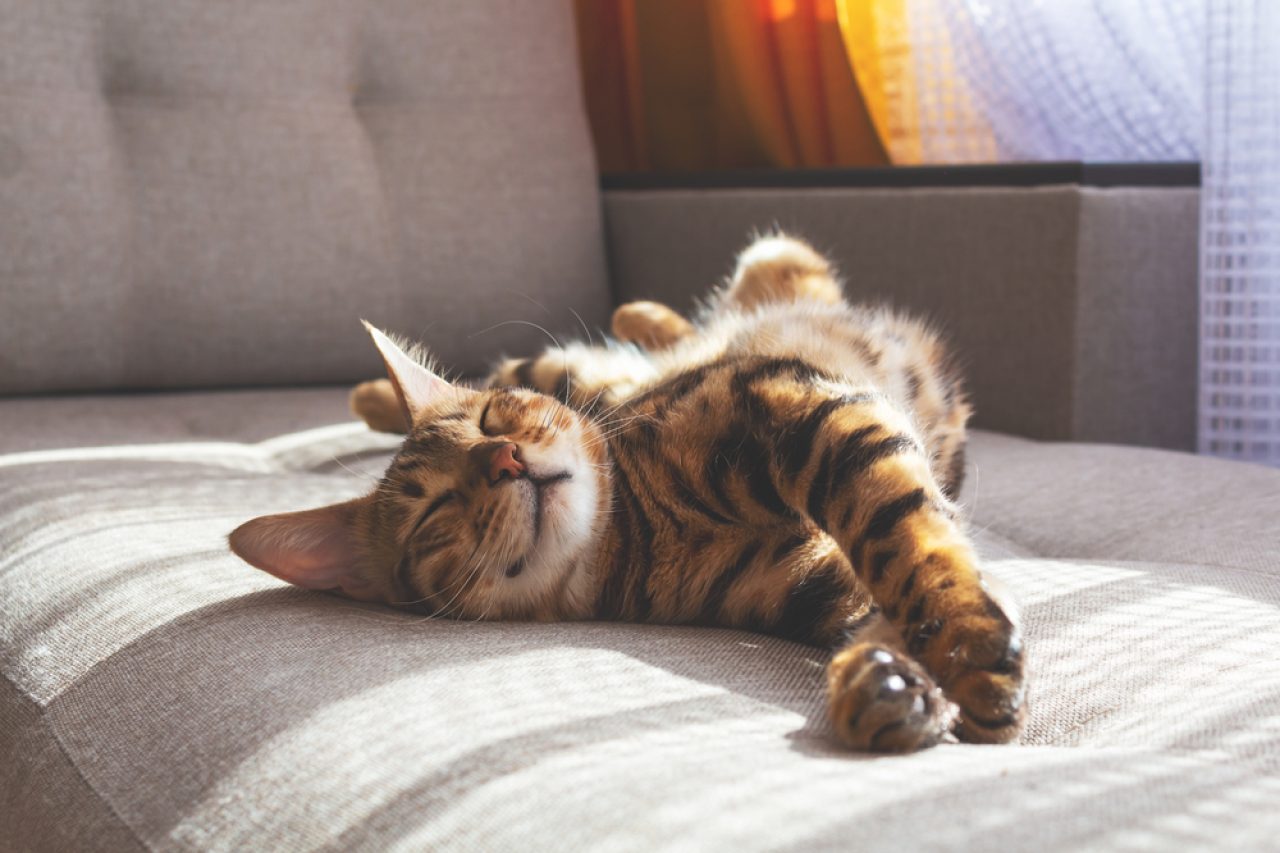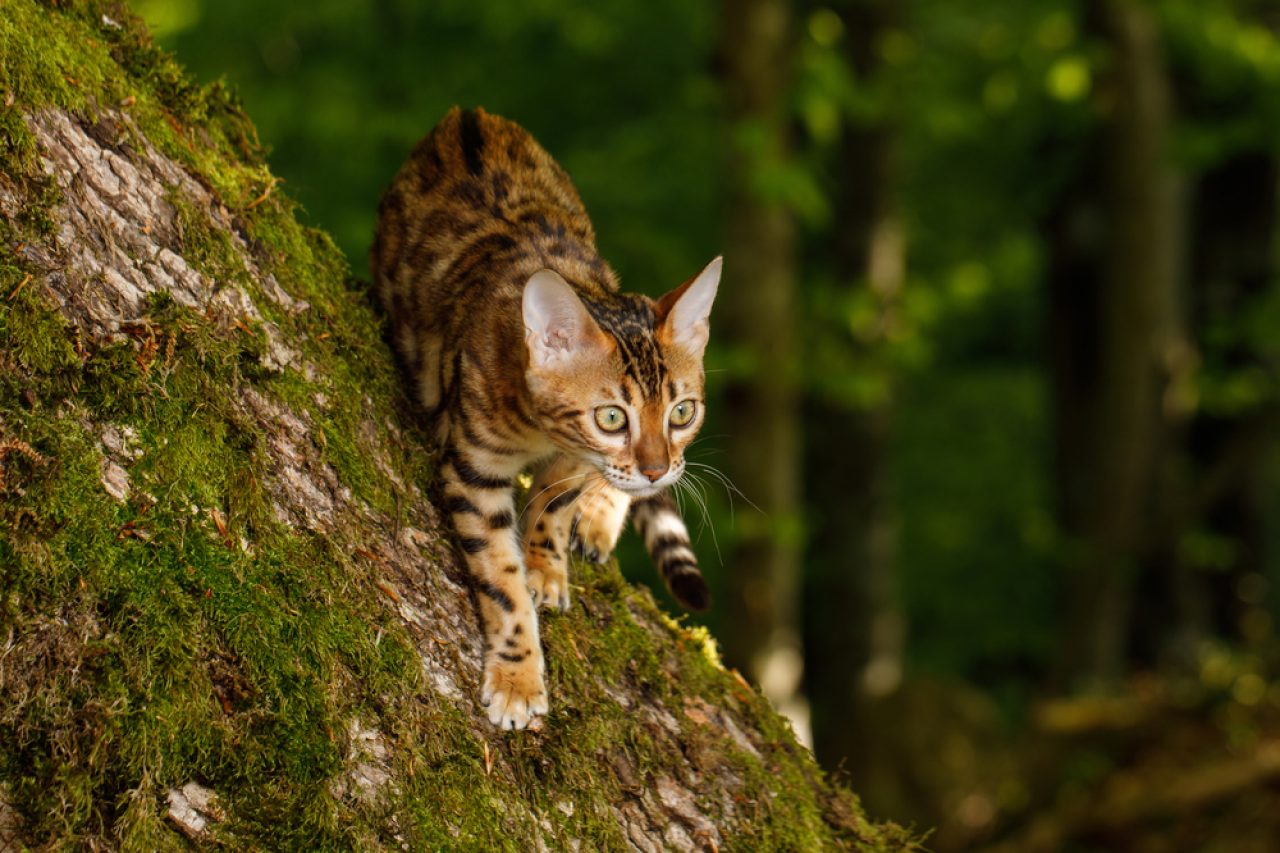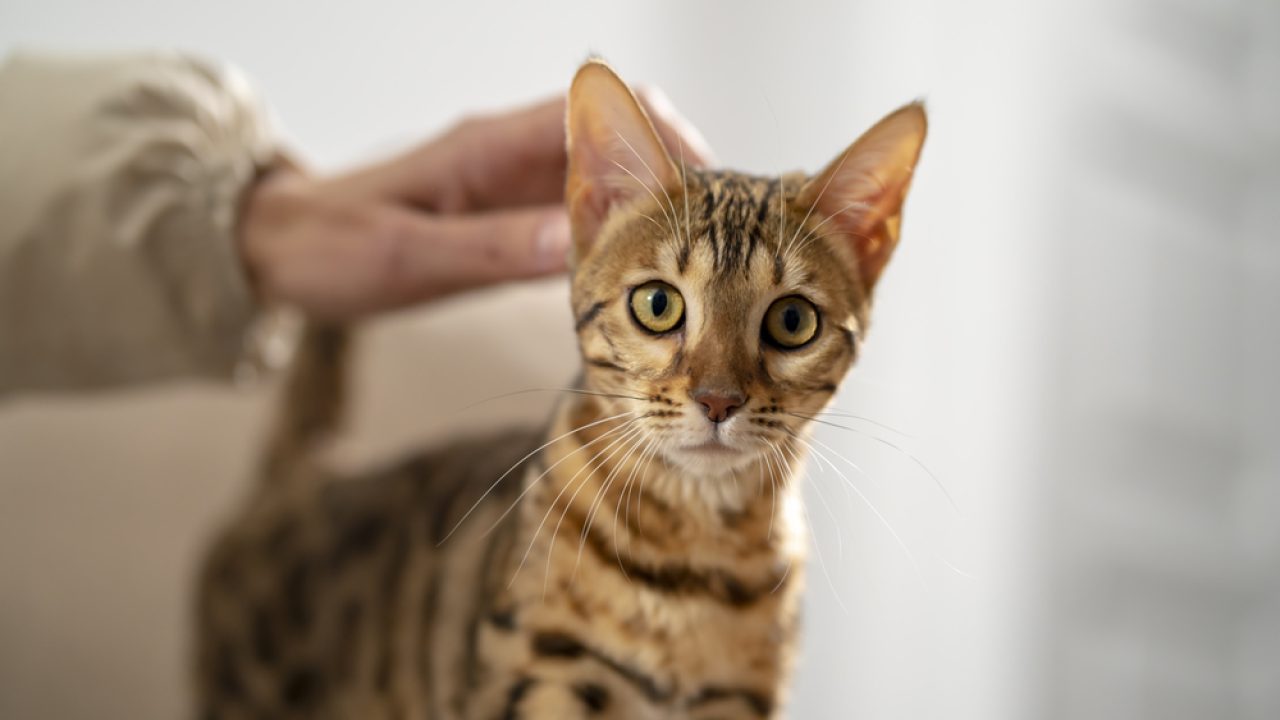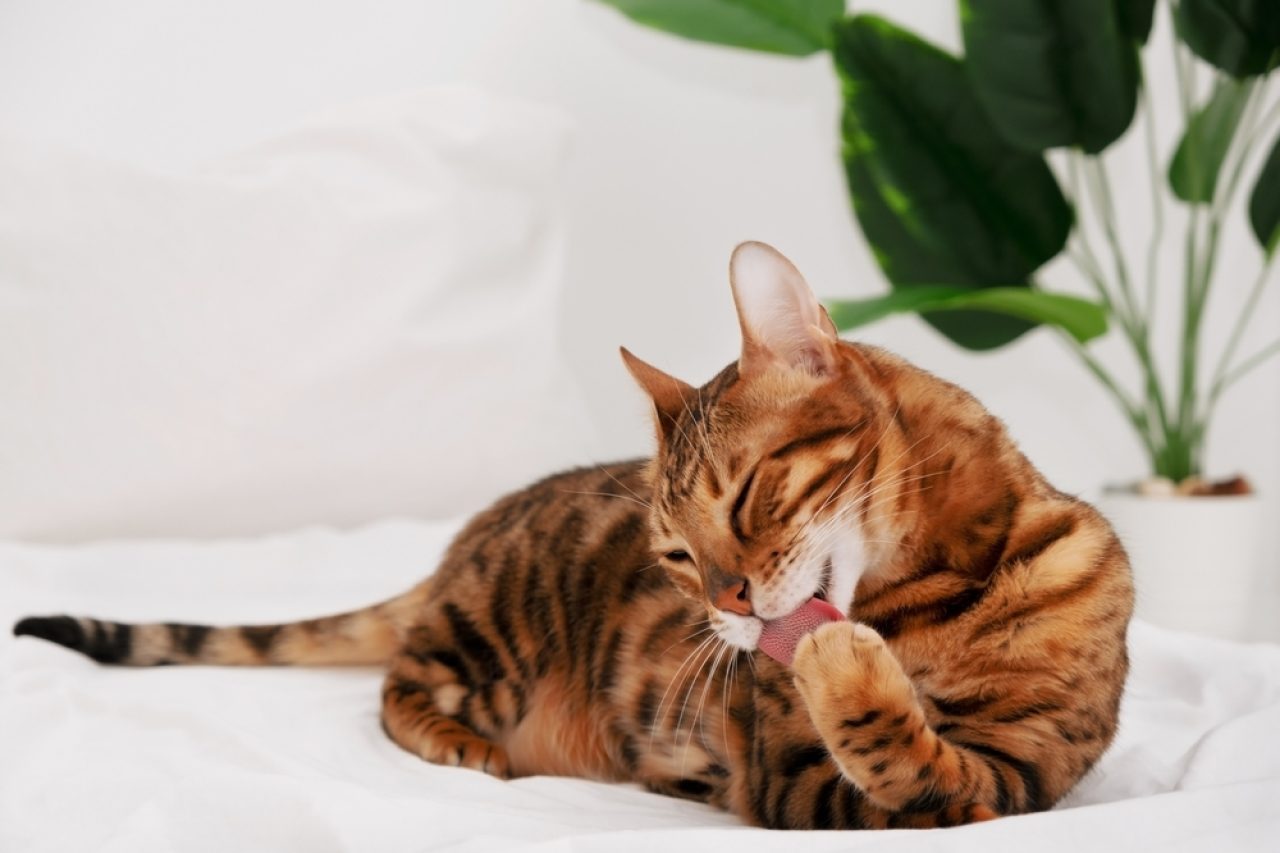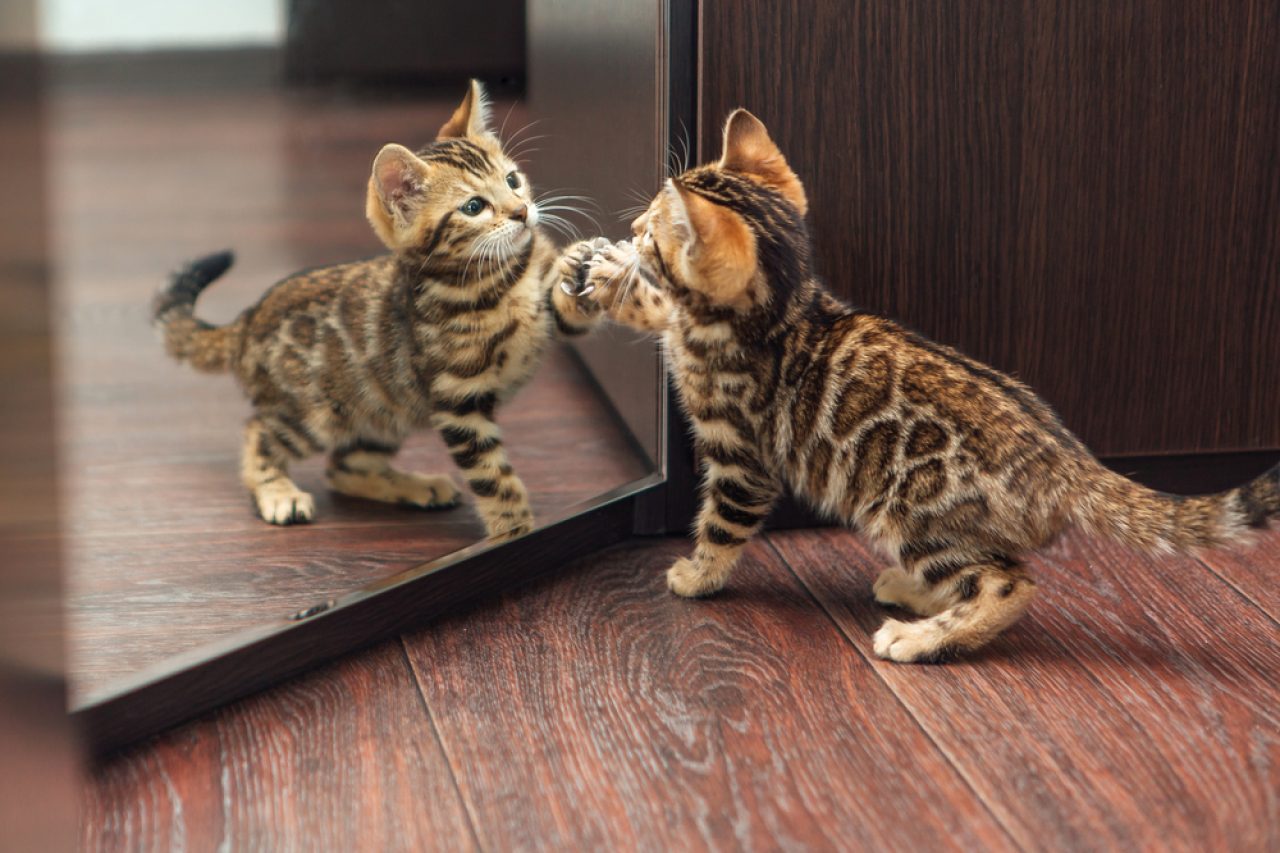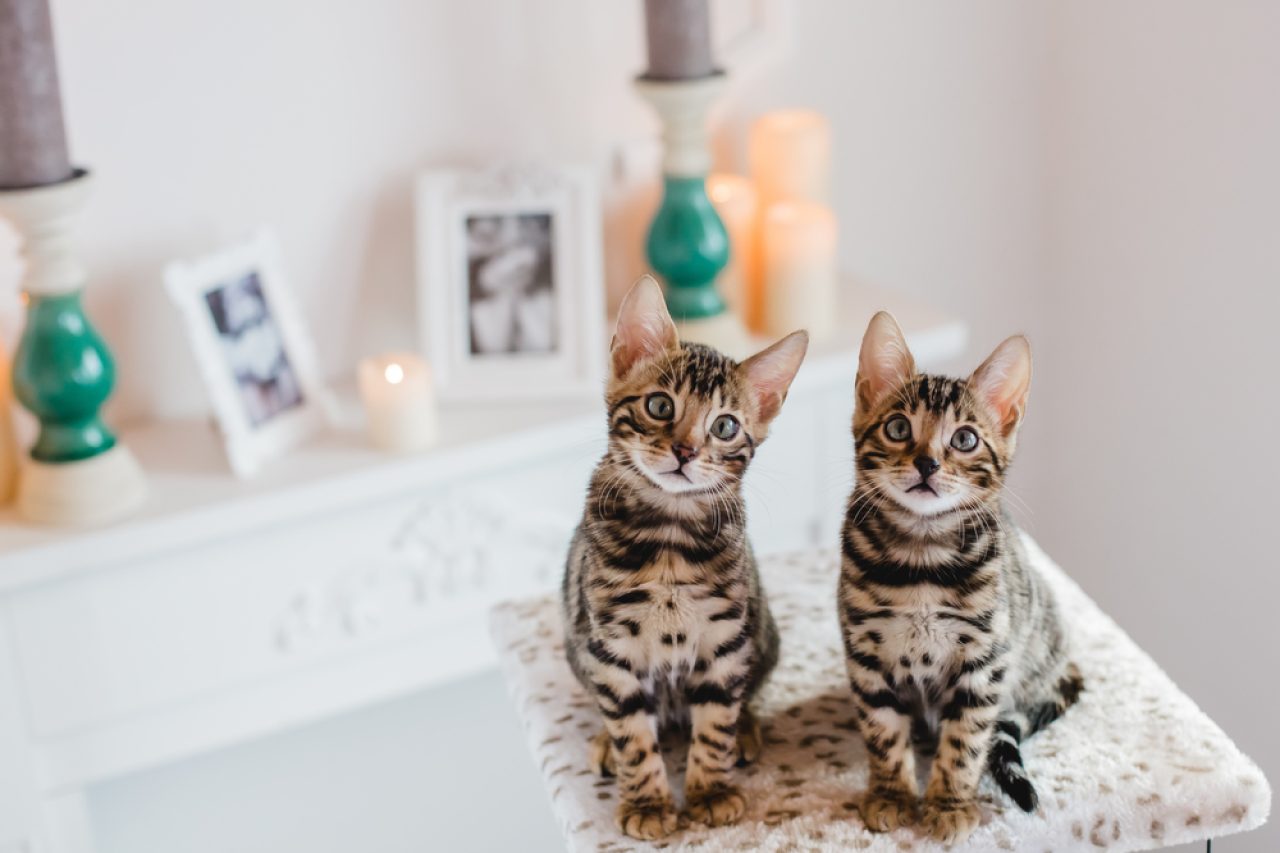📖 Table of Content:
“Do Bengal cats get along with other cats?” you think to yourself as you’re watching a video on Instagram of one making muffins on the blanket. You’ve never thought of becoming a pet parent, but these videos are proving to be the death of you – how can you resist those rosette markings!?
Of course, the reason you’re wondering whether these leopard-like beauties are aggressive has to be the fact that everyone around you (and their mother!) seems to have a friend of feline descent.
And, you’re not about to lose your friends and family to become a crazy cat lady surrounded by Bengals galore (unless you’re down!?)
But, before you head off to find the nearest breeder and book a Bengal to-go, you thought you should consider a couple of things.
Are you emotionally, mentally, and physically prepared to care for another creature that doesn’t wash the dishes or fold the laundry? Do you have enough money to support another creature’s feeding habits?
And, does the creature plan on overtaking your life by being aggressive to everyone around you until they (by force of circumstance) leave? Turns out you came knocking on the right door because we’re bringing you everything you need to know about these wild, but not-so-wild fluffers.
That’s right, get ready to break the news to your friends, family, landlord, and every poor soul on your social media accounts that “definitely didn’t ask for a review of the newest addition to your apartment.” Oh, things are about to get catty and we’re here for it!
Do Bengal cats get along with other cats?
Here’s the thing! Bengal cats are absolutely adorable, affectionate, and sweet from the moment they enter your household. They don’t shy away from letting you cuddle and snuggle with them. They even let you carry them around when they’re feeling safe and secure.
Trust me, they make for the purrfect pets when you know how to take care of them. But we can’t say that these bad boys aren’t… bad! They appreciate hanging out with humans, little humans, and even fluffers that aren’t Bengals.
Nonetheless, they tend not to react great when they’re presented with a bunch of new faces (for the first time) when they’re older and already accustomed to a solitary lifestyle. Do you want a Bengal to be accepting, sociable, and friendly? Make sure she’s accustomed to different situations from an early age.
What do we mean by that? We feel that Bengals get a bad rep for the wrong reasons (only because they don’t do everything humans expect them to do!)
If you’re looking for a pet that doesn’t have a single thought between the eyes and lights up the room the moment you open the door, get a dog. But if you’re looking for a self-sufficient, knows-what-she-wants type of pet, get a Bengal.
And should your Bengal become aggressive and start throwing tantrums whenever she hangs out with humans or other fluffers, you might have a “you” problem on your hands. Bengals don’t lash out without reason, we can say that much! Here’s what to keep an eye out for, though!
Why are Bengal cats aggressive? (Objection, Your Honor, hearsay!)
Wondering whether Bengals get along with other cats doesn’t come as a surprise considering the fact these beauties are as close to wild cats as you can get. However, we can’t help but feel Bengals are getting wrongfully accused of something they haven’t done (or at least haven’t caused).
Repeat after me: “Any cat can become aggressive when provoked or poorly handled!” Trust me, as long as you take the time to learn how to care for your Bengal purrincess, provide her with everything she needs, and socialize her from an early age, you have nothing to worry about.
Sure, there are times when she’ll probably hop on the counter or knock something down. But, she’s not doing that because she’s a cat. She’s doing that because she’s responding to something she’s experiencing on a regular basis. She’s communicating something she wants you to understand.
And, don’t beat yourself up that you don’t know what a Bengal needs right off the bat. Whether you’re wondering, “are Bengal cats aggressive” or “do Bengal cats get along with other cats,” we’re here to help!
Here are a couple of reasons your Liliputian leopard might be throwing tantrums and making you question your parenting techniques.
1. Bengals are territorial
Bengal cats are pretty much the most territorial breed out of the bunch. They’re not afraid to attack anyone or anything that dares disturb the peace they have made for themselves.
As a matter of fact, a year or two ago, there were even reports of Bengal cats terrorizing British tabbies. Who would’ve thought?
That said, Bengals that have been hanging out with other cats (and other animals) from the moment they were born don’t have that problem. Sure, they rub their teeth on you (or the furniture) and they pee on your plants when you’re not paying attention.
But they don’t attack anyone because they don’t feel threatened – they know other kitties are trying to be their friends!
2. Bengals exude energy
Bengals get along with other cats just fine… As long as they’re not trying to release some of that built-up energy from not doing anything the entire day.
So, if your little leopard is climbing the shelves and hopping off of the TV, you know what’s up. She hasn’t had the opportunity to spend that energy!
What do you do, then? Make sure your Bengal has enough physical activity throughout the day. Bengals are highly energetic – they won’t be satisfied with a mere 15 minutes of playtime a day.
Trust me, they behave much better when they’ve been running around your backyard, chasing after butterflies, and hopping around for most of the day.
3. Are your Bengals neutered or spayed?
“Tell me your Bengal hasn’t been neutered or spayed without telling me your Bengal hasn’t been neutered or spayed. I’ll go first…”
That TikTok sound must have had a bunch of pet parents talking smack about their Bengal’s aggressive behavior because… Trust me, you don’t want to mess with a Bengal during mating season.
When you neuter or spay your frisky feline, you’re making sure she doesn’t feel as much need to mark her territory. Not only that, but she doesn’t have the urge to roam around looking for a mate (which seems to be her way of starting fights with other cats).
And you’re making sure she’s more gentle, composed, and unbothered. Great for everyone, right!?
4. Bengals crave attention more than they crave chicken
And, that’s saying something! Bengals absolutely adore humans. They always want somebody to spend time with and they’re not that big on personal space and “me time.”
Bengals love playing with toys and running around the backyard while you’re watching over them (or chasing them). They even love playing with water (Nerf guns for the win!) and doing little tricks you teach them.
But when they see you don’t have “all eyes on them,” they might become frustrated and aggressive.
Make sure you’re providing your Bengal with plenty of affection, cuddles, snuggles, and (most importantly) physical activity. She shouldn’t attack other cats when she knows you’re giving your attention to her and not them.
5. Bengals don’t like sharing
“Sharing is caring!” but not according to Bengals. As mentioned beforehand, your Bengal might not get along with other cats when she notices you’re giving them more attention. Not only are Bengals territorial and possessive, but they don’t like sharing, either.
Now, we’re not saying you shouldn’t play with other cats to make sure you don’t hurt your Bengal’s feelings. But when you make a priority out of socializing your Bengal when she’s a kitten, she won’t grow up thinking you’re abandoning her every time you scratch another kitty’s tummy.
How to ensure a Bengal gets along with other cats?
When you’re planning on doing something nobody expects you to do (like adopting a Bengal), you might feel overwhelmed with all the information you’re trying to accumulate in such a short period. And, you might feel attacked with questions such as “do Bengal cats get along with other cats” and “do you even need a Bengal cat.”
We’re here to help you – at least with the part where you’re trying to learn how to get your Bengal to tolerate and get along with other cats.
From scent marking the other feline to letting them stare at each other from afar, here are a couple of things you could do to make sure your Bengal experience goes as smoothly as possible.
1. Present your Bengal to other cats as slowly as you can
Oh, you bit the bullet and brought your Bengal home – what do you do now? Whether you’re trying to socialize her with your friend’s Maine Coon or you’re hoping she won’t munch on your neighbor’s little Persian kitten, you might be wondering, “Where do I even start!?”
Start with scent. Bring her something with the scent of the other cat to familiarise them. Then organize a supervised meeting where the two can stare at each other as much as they want (no touching, though!)
After that, leave them alone (but watch from afar). Let them sniff each other and do whatever they need to do. They should be best buddies before you can even say “Weren’t Bengals supposed to be aggressive!?”
2. Make sure your Bengal doesn’t have to share anything with other cats
“Bengals don’t share food!” Wasn’t that what Joey told Pheobe in The One With The Birth Mother episode of Friends? Oh, wait, he was talking about himself! But he may as well have been talking about Bengals because these beauties don’t appreciate sharing food… or toys, or humans, or pretty much anything else.
But, there’s a way you can deal with a possessive Bengal! Make sure she doesn’t need to share anything. She needs to have her food and water away from the other cat, her bed needs to be separate from the other cat’s bed, and her toys hidden somewhere only she can find them.
Sounds excessive at first, but trust me, works great for older Bengals that are already accustomed to being the only child!
3. Establish a routine
Bengals have a hard time getting along with other cats when they feel like they’ve been blindsided. Turns out Bengals appreciate routine – they are much better at handling different situations when they know they’re coming. Hence the importance of socializing your Bengal from a young age.
But other than that, establish a routine and observe how her behavior changes. Feeding her from the same plate, cuddling with her at around the same time, and letting her play with other cats all on the same day can (and will!) do wonders to stabilize any potential aggression.
4. Try adopting two at the same time
Oh, don’t even try to say you haven’t thought about that before! Now, adopting two Bengal kittens at the same time might not be everyone’s cup of tea (or even everyone’s pawsibility). But, we shouldn’t overlook the benefits that would come from your Bengal having somebody to play with from the get-go.
Truth be told, Bengals appreciate each other’s company. They learn from each other – they can follow each other’s pace and grow together in learning how to deal with other cats (and other animals). A lot of that aggression you might see with “only child Bengals” wouldn’t appear with those who grew up with a friend.
5. Choose the right friend for your Bengal
And you don’t even have to adopt a Bengal for your Bengal! Turns out there are other kitties that share purrsonalities and anger management problems with your little leopard – and they would make for the best of friends growing up together (and getting on your nerves!)
Siamese, Persian, Abyssinian, Burmese, and Siberian cats are perfect for a Bengal’s standards. Not only are they going to wear each other out, but give you enough time to focus on yourself (rather than flailing a fake mouse over your Bengal’s head, hoping to get her to play).
So, what are you waiting for!? Muster up the courage and start roaming the agencies. We’re sure there’s an absolutely adorable little leopard waiting for you!
